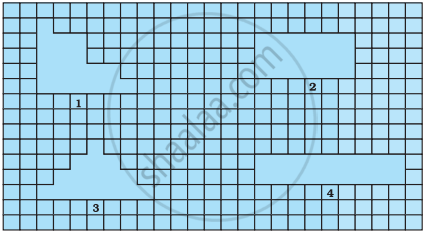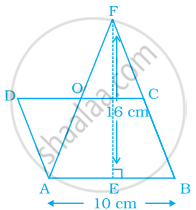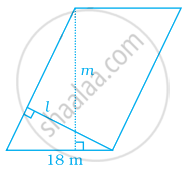Advertisements
Advertisements
प्रश्न
To find area, any side of a parallelogram can be chosen as ______ of the parallelogram.
उत्तर
To find area, any side of a parallelogram can be chosen as base of the parallelogram.
Explanation:
While calculating the area of the parallelogram, we can choose any side as base.
APPEARS IN
संबंधित प्रश्न
PQRS is a parallelogram (see the given figure). QM is the height from Q to SR and QN is the height from Q to PS. If SR = 12 cm and QM = 7.6 cm. Find:
- the area of the parallelogram PQRS
- QN, if PS = 8 cm

Find the missing values.
| Base | Height | Area |
| 18 cm | 5 cm |
Janaki has a piece of fabric in the shape of a parallelogram. Its height is 12 m and its base is 18 m. She cuts the fabric into four equal parallelograms by cutting the parallel sides through its mid-points. Find the area of each new parallelogram
The area of parallelogram whose base 10 m and height 7 m is
Find the missing value:
| Base | Height | Area of parallelogram |
| 15.6 cm | ______ | 16.38 cm2 |
Observe the shapes 1, 2, 3 and 4 in the figures. Which of the following statements is not correct?

If perimeter of two parallelograms are equal, then their areas are also equal.
In the given figure, area of ∆AFB is equal to the area of parallelogram ABCD. If altitude EF is 16 cm long, find the altitude of the parallelogram to the base AB of length 10 cm. What is the area of ∆DAO, where O is the midpoint of DC?

Perimeter of a parallelogram shaped land is 96 m and its area is 270 square metres. If one of the sides of this parallelogram is 18 m, find the length of the other side. Also, find the lengths of altitudes l and m in the given figure.

ABCD is a parallelogram in which AE is perpendicular to CD as shown in the given figure. Also, AC = 5 cm, DE = 4 cm and area of ΔAED = 6 cm2. Find the perimeter and area of parallelogram ABCD.
